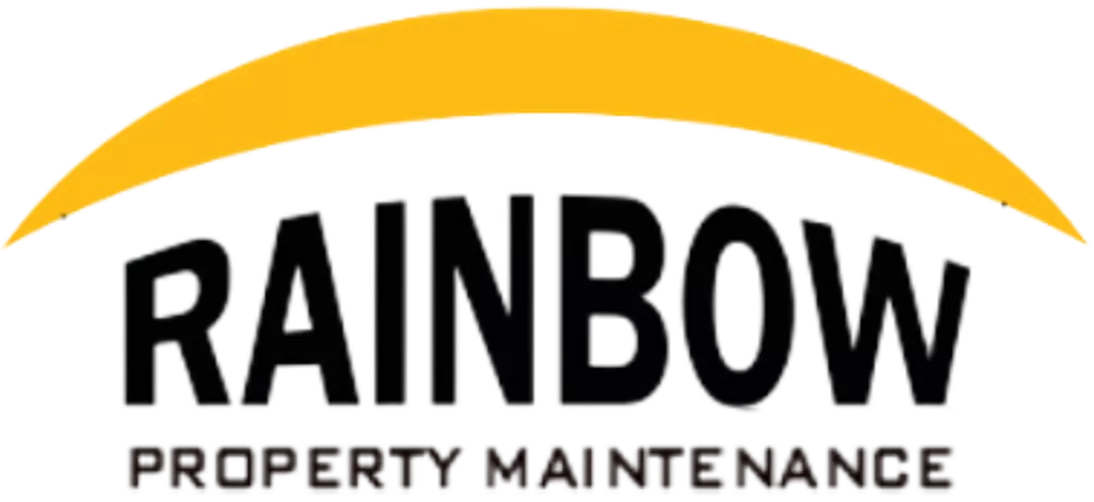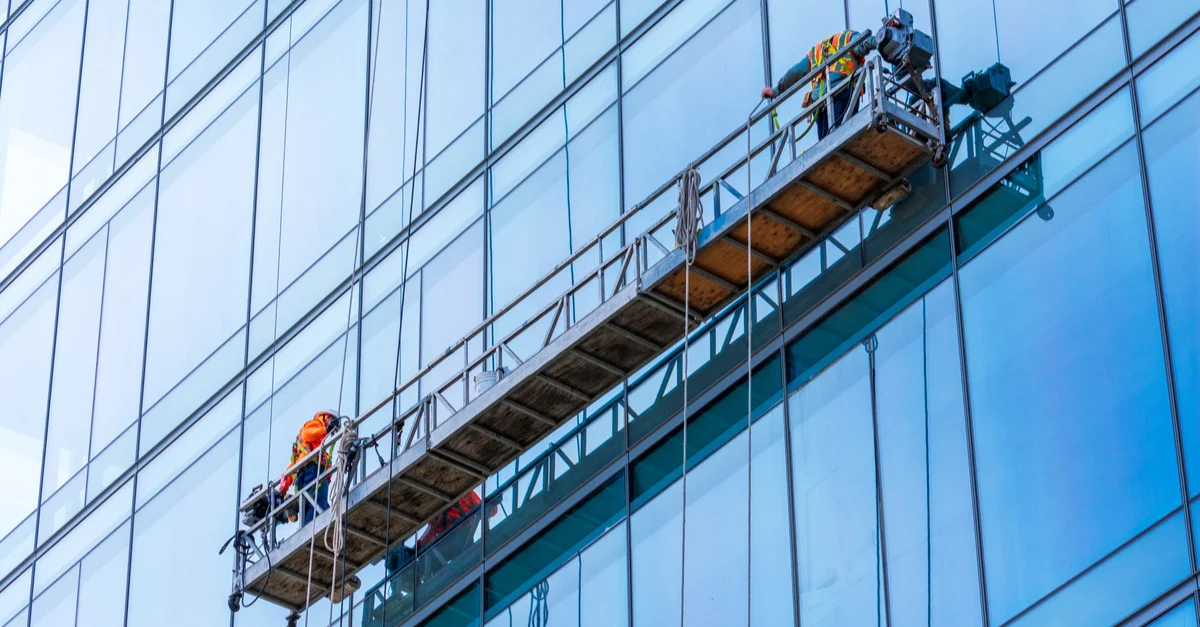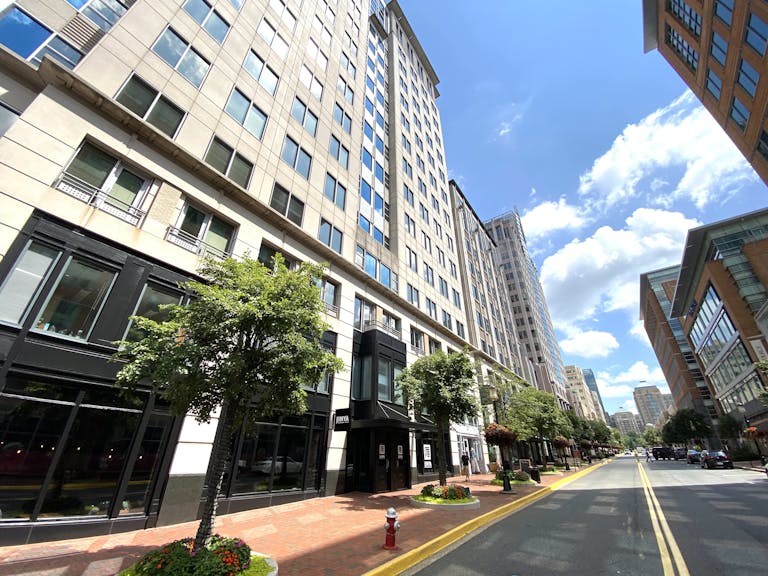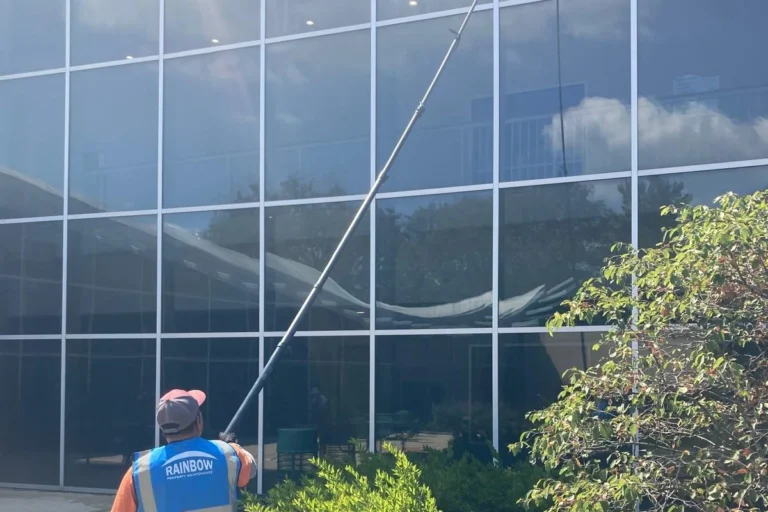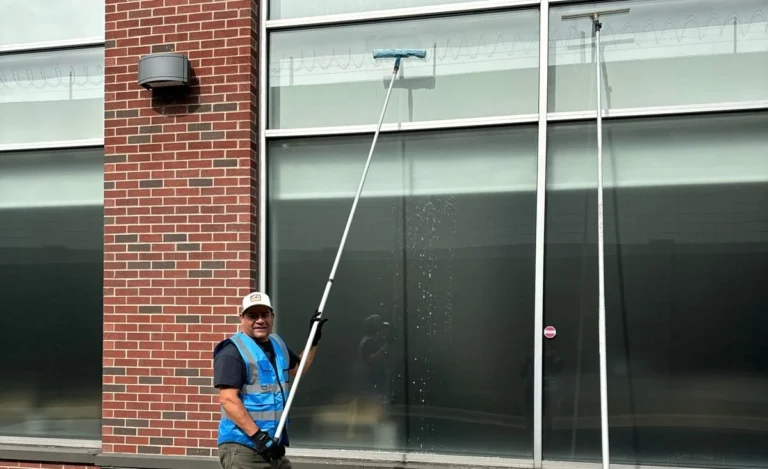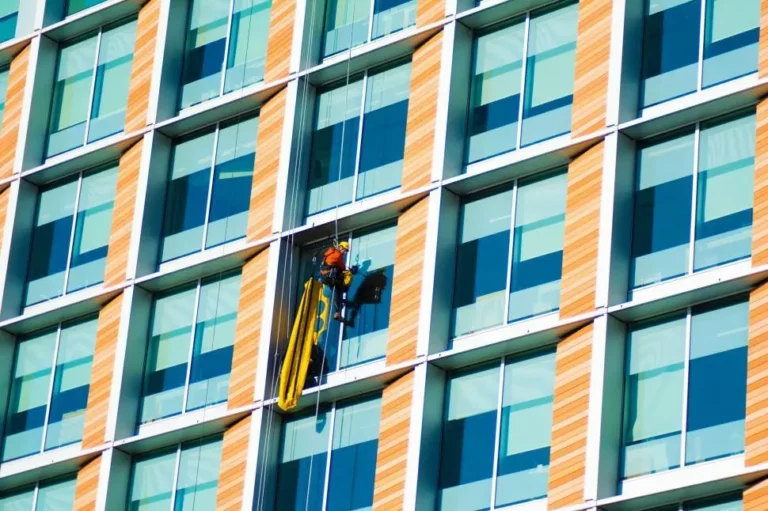Top 10 Essential Commercial Facility Maintenance Tips for 2024
As we approach 2024, staying ahead in facility maintenance means more than just regular cleaning. It encompasses a proactive approach to ensure sustainability, efficiency, and safety in your commercial properties.
Adhering to these top 10 essential commercial facility maintenance tips will not only maintain but enhance the value and functionality of your facilities.
Key Takeaways:
- Preventative maintenance is worth the investment.
- Eco-friendly practices can save money and the environment.
- Technological integration streamlines facility management.
- Regular audits ensure continuous efficiency and safety.
- Employee and tenant satisfaction directly correlates to well-maintained facilities.
- Adaptability to new maintenance trends is crucial for 2024.
Implementing a Preventative Maintenance Schedule
Preventative maintenance might sound like just another task on your never-ending to-do list, but trust us, it’s a game-changer for commercial facility upkeep. By getting ahead of potential issues, businesses can avoid the headache of unexpected repairs that come with hefty price tags. Let’s break down the strategy for a smoother operation.
Grasping the Importance of Proactive Measures
The key to preventative maintenance lies in understanding its direct impact on operational efficiency. By dedicating time to regular checks and servicing, you effectively minimize the risk of downtime caused by equipment failure. This approach is not about fixing things when they break; it’s about keeping them running without a hitch in the first place.
Crafting a Comprehensive Plan
Where do you start? Step one is assessing your facility’s needs. This involves listing all the equipment and systems requiring regular maintenance. Next, establish a schedule that fits your operational calendar. It doesn’t have to be complex – a simple spreadsheet will do the trick. The goal is to have a clear overview of maintenance activities throughout the year.
The Power of Routine Inspections
Routine inspections are your best defense against unexpected repairs. They allow you to catch minor issues before they balloon into major problems. A dripping faucet today could lead to water damage tomorrow. An unchecked HVAC system can turn into a costly replacement down the line. Regular checks keep your facility in top shape and your budget intact.
By adopting a comprehensive preventative maintenance schedule, you’re not just safeguarding your assets; you’re ensuring that your business operations stay smooth and uninterrupted. It’s a strategic move that pays off in savings, efficiency, and peace of mind. And remember, in a world where downtime is not an option, staying proactive is your best bet for 2024 and beyond.
For those looking to dive deeper into maximizing their post-maintenance efficiency, Explore our comprehensive post-construction cleaning checklist for 2024. It’s your blueprint for keeping your facility in pristine condition after any construction or major maintenance work.
Incorporating Eco-Friendly Practices
In today’s world, the push toward eco-friendly practices is more than just a trend—it’s a crucial shift for businesses aiming to reduce their environmental footprint and enhance their operational sustainability. For facilities eager to embrace green initiatives, starting with simple steps can lead to significant impacts.
Transitioning to Green Cleaning Products
One immediate change facilities can make is switching to green cleaning products. These alternatives not only minimize harm to the environment but also safeguard the health of your staff and clients by reducing exposure to harsh chemicals. Embracing such products reflects a commitment to sustainability and health, pivotal aspects of modern business ethos.
Embracing Energy-Efficient Solutions
Energy efficiency stands at the core of eco-friendly practices. By upgrading to energy-efficient lighting and appliances, facilities can drastically reduce power consumption. This not only aligns with green directives but also translates to substantial savings on utility bills. Integrating motion sensors and smart thermostats further optimize energy use, ensuring that lights and heating or cooling systems operate only when needed.
Implementing Water-Saving Measures
Water conservation measures offer another avenue for facilities to reinforce their commitment to environmental stewardship. From installing low-flow faucets and toilets to adopting water-efficient landscaping, these strategies significantly lower water usage and associated costs. Additionally, such measures often qualify for rebates and incentives, enhancing the financial viability of these green investments.
Learn more about our Eco-friendly cleaning services as part of your journey toward a more sustainable and efficient facility management approach. Incorporating these eco-friendly practices not only contributes to the planet’s well-being but also positions your business as a forward-thinking, responsible entity in the eyes of consumers and partners alike.
Leveraging Technology for Efficient Management
In the quest for efficiency, integrating technology into facility management has proven to be a game-changer. Advanced technologies not only streamline operations but also offer unprecedented control over facility environments, enhancing both security and overall efficiency.
Embracing Facility Management Software
At the heart of tech-driven facility management is the adoption of sophisticated software. These platforms serve a dual purpose, automating routine tasks and providing a comprehensive view of a facility’s operational status. From scheduling maintenance to energy consumption analysis, facility management software stands as an essential tool, ensuring that managers stay ahead of maintenance needs without drowning in paperwork.
Harnessing IoT for Enhanced Monitoring and Control
The Internet of Things (IoT) has taken facility management to new heights. By utilizing IoT, facilities can achieve real-time monitoring and control of various systems, from lighting to HVAC, ensuring optimal conditions while minimizing waste. This connectivity not only aids in reducing energy consumption but also plays a critical role in predictive maintenance, spotting potential issues before they evolve into costly repairs.
Innovations in Security and Access Systems
Security and access control have seen significant advancements thanks to technology. Modern systems now employ biometrics, mobile access, and remote monitoring, offering superior protection compared to traditional methods. These innovations not only secure premises but also streamline the management of access, ensuring only authorized individuals can enter specific areas.
By incorporating these technological solutions, facilities can achieve unparalleled efficiency and security. As we move forward, the role of technology in facility management will only grow, offering new ways to improve operations and reduce costs. For those looking to dive deeper into the potential of technology in facility management, Discover how technological integration can streamline your facility’s five management. This strategic adoption not only improves day-to-day operations but also sets a new standard for industry practices.
Conducting Regular Safety and Efficiency Audits
A cornerstone of maintaining a secure and efficient operation within commercial facilities is the regular conduct of safety and efficiency audits. These audits are pivotal in identifying potential hazards and inefficiencies that could hamper the smooth running of a facility.
Essential Components of a Facility Audit
A thorough facility audit zeroes in on several critical areas, including but not limited to, compliance with safety regulations, energy consumption, and the state of the infrastructure. By dissecting these components, facility managers can obtain a granular view of where attention is needed, thereby preempting any possible issues that could escalate into costly problems.
Amplifying Facility Safety
Safety audits go a long way in not just pinning down existing safety concerns but also in predicting areas that could become hazards. By proactively addressing these potential risks, facilities can circumvent incidents that may result in injuries or worse, ensuring a safe environment for both employees and clients alike.
Enhancing Operational Efficiency
The insights garnered from efficiency audits are invaluable in streamlining operations, cutting down waste, and boosting overall productivity. Analyzing energy usage patterns may reveal opportunities for cost savings, while a review of workflows might highlight redundant processes that can be optimized or eliminated.
Regular audits are more than a compliance checkbox; they are a strategic tool in a facility’s operational arsenal. It is through these audits that a facility can truly align its practices with its safety and efficiency goals. For managers looking to further refine their auditing processes, Discover how technological integration can streamline your facility’s management offers insights into leveraging technology for more thorough and effective audits. By embracing such strategies, facilities position themselves to not only meet but exceed the evolving standards of safety and efficiency.
Enhancing Cleaning and Sanitation Procedures
In the aftermath of the pandemic, the emphasis on hygiene and sanitation has considerably heightened. Commercial facilities have had to recalibrate their cleaning regimes to comply with the new expectations, ensuring safety for both employees and visitors.
Adjusting to New Sanitation Norms
Post-pandemic, the standard for cleanliness has been elevated. Facilities are now expected to not only maintain their premises in immaculate condition but also to demonstrate their commitment to health safety proactively. Embracing advanced cleaning technologies and methodologies has become a non-negotiable aspect of facility management.
Leveraging Advanced Cleaning Technologies
The adoption of cutting-edge cleaning technologies provides an efficient means to achieve deeper cleanings, such as electrostatic sprayers for disinfection or UV light sanitizers for non-invasive cleaning. These technologies afford facilities the ability to maintain higher standards of cleanliness with greater efficiency.
Crafting Comprehensive Cleaning Checklists
Developing a meticulous cleaning checklist that is customized to the specific needs and areas of a facility ensures that no corner is overlooked. These checklists serve as a roadmap for cleaning staff, ensuring every area is sanitized and inspected regularly. They become an essential tool in maintaining a consistent cleaning schedule that meets post-pandemic expectations.
By recalibrating cleaning and sanitation practices to meet the heightened expectations of a post-pandemic world, commercial facilities can reassure occupants of their safety and health. Adapting to these standards is pivotal in navigating the new normal, where cleanliness directly correlates with the well-being of those using the space. For an in-depth guide on crafting effective post-construction clean-up protocols that align with these new standards, explore our comprehensive post-construction cleaning checklist for 2024.
Fostering a Culture of Sustainability
In a world that’s rapidly embracing green initiatives, fostering a culture of sustainability within commercial facilities has become crucial. It’s about evolving practices to ensure operations not only benefit the environment but also contribute positively to the health and well-being of employees and tenants.
Engaging Employees and Tenants
Creating a sustainable environment requires the collective effort of everyone involved. By educating and engaging employees and tenants about the importance of sustainability efforts, facilities can cultivate a community that actively participates in green practices. This can range from simple acts like recycling to more involved programs that encourage sustainable living.
Recycling and Waste Reduction Programs
Implementing comprehensive recycling and waste reduction programs is a tangible step towards minimizing environmental impact. Facilities that prioritize these programs not only contribute to the earth’s welfare but also often see a reduction in operation costs, making sustainability not just an ethical choice but a financially sound one.
Evaluating Environmental Policies of Suppliers
The commitment to sustainability extends beyond the confines of the facility. Evaluating the environmental policies of suppliers and contractors ensures that the entire supply chain reflects the facility’s green ethos. By choosing environmentally responsible partners, facilities strengthen their sustainability practices and contribute to a more significant ecological impact.
Discover how technological integration can streamline your facility’s management, ensuring that sustainability efforts are as efficient as they are effective. Integrating technology not only enhances the sustainability of operations but also propels facilities towards a future where green practices are intertwined with every aspect of facility management.
Conclusions
As we look ahead to 2024, the landscape of commercial facility maintenance continues to evolve, demanding a more sophisticated and holistic approach. Embracing the top 10 essential commercial facility maintenance tips outlined in our discussion will not only preserve the integrity of your facilities but significantly enhance their efficiency, safety, and sustainability. These strategies encapsulate a broad spectrum from proactive preventative maintenance schedules to advanced technological integration, eco-friendly practices, regular safety, and efficiency audits, alongside fostering a culture of sustainability amongst employees and tenants.The benefits of such comprehensive maintenance strategies are manifold. Preventative maintenance underlines the principle of ‘a stitch in time saves nine,’ effectively reducing long-term costs and unexpected downtime. Leveraging technology, such as facility management software and IoT, introduces unparalleled operational efficiency, providing real-time insights and control over facility conditions.Moreover, the shift towards green cleaning practices and sustainable operations reflects a growing commitment to environmental stewardship—a crucial factor in today’s market where eco-consciousness ranks high on the agenda of tenants and customers alike.Adaptability to emerging maintenance trends ensures that your commercial facilities remain competitive, safe, and appealing to both current and prospective occupants. By integrating these top tips into your maintenance plans, your facilities can thrive as vibrant, efficient, and sustainable spaces that positively impact the well-being of their occupants and the environment.In conclusion, staying ahead in 2024 and beyond requires more than just routine upkeep; it demands a forward-thinking approach that embraces innovation, sustainability, and inclusivity. We encourage you to explore our comprehensive post-construction cleaning checklist for 2024, learn more about our eco-friendly cleaning services, and discover how technological integration can streamline your facility’s management. Together, these resources will equip you to ensure that your commercial facilities remain at the forefront of efficiency and sustainability, positioning them as exemplars in the commercial property market.
Frequently Asked Questions (FAQ):
How often should preventative maintenance be scheduled?
The frequency of preventative maintenance depends on the equipment and facility use but generally, a quarterly schedule is recommended for thorough inspections and maintenance.
What are the benefits of using eco-friendly cleaning products?
Eco-friendly cleaning products reduce harmful chemicals in the environment, are safer for facility occupants, and can contribute to healthier indoor air quality.
Can technology make facility management more efficient?
Yes, using facility management software and IoT devices can streamline maintenance tasks, improve monitoring, and enhance security, leading to more efficient operations.
How do regular audits benefit facility maintenance?
Regular audits help identify inefficiencies and safety hazards, ensuring that facilities remain compliant, safe, and operate at optimal levels.
